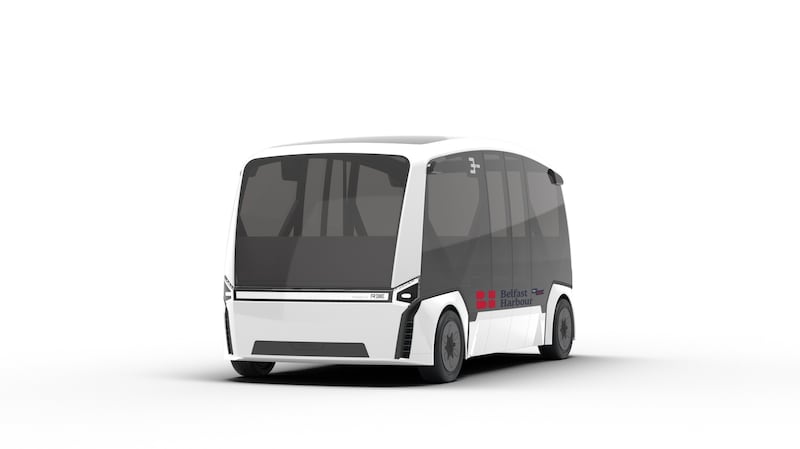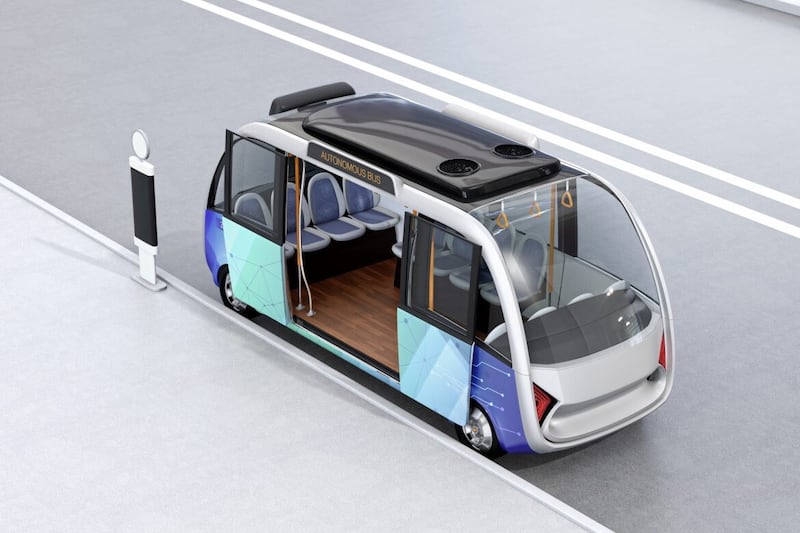THE north’s first self-driving shuttle service will be formally launched in Belfast Harbour Estate at the end of next year, it has been confirmed.
As exclusively revealed in the Irish News in November, passengers will be able to avail of the city's first fully driverless transport system on a mile-long route from the Titanic Quarter railway station to the Catalyst Science Park in Queen’s Island.
Departing every 15 minutes and capable of carrying 16 passengers per journey, it is likely to garner huge interest in the harbour, which is home to a mix of 760 businesses, and to its hundreds of permanent residents as well as 1.5 million ferry and cruise ship passengers every year.
The project - christened the ‘Harlander’ - is being created as part of an £11 million funding package from Innovate UK and industry partners including REE Automotive, Angoka, BT and Horiba Mira.
The initiative has been awarded £5.5m in funding from Innovate UK, which is working with the Centre for Connected and Autonomous Vehicles to invest £41.5m in seven similar innovation projects across the UK.
The scheme, which has been in the offing for more than four years, is part of a shared ambition for the 2,000-acre harbour to become the world’s best regional port and to create an iconic waterfront district for Belfast which will be an attractive place to live, work, visit and invest.
Mike Dawson, people and corporate services director at Belfast Harbour, said: “We have a long track record of delivering and supporting innovation, so we are delighted to be establishing the UK’s first operationally ready and commercially viable deployment of a fully automated shuttle service on publicly accessible roads within the Harbour Estate.
“The City’s Innovation District has enormous potential for growth and we at Belfast Harbour want to play our part in helping to build an innovation eco-system that brings investment into the economy.
“Electrified connected and automated vehicles offer a route to provide a clean, efficient, and affordable public transport that aligns with net zero targets and provides connectivity to other modes of transport.”
Paul Murnaghan, director of BT’s Enterprise business in Northern Ireland, who are partnering on the scheme, said: “We're delighted to be working with Belfast Harbour on this autonomous vehicle trial, which could see some exciting and ground-breaking developments for the city.”

He added: “We will be providing advanced connectivity for the trial through our extensive 5G mobile network, as well as our security expertise and innovation to continue to help the harbour to realise their ambitions of becoming a Smart port.
“We want this trial to become a leading example of how technology innovation can bring broader benefits to Belfast and the wider region for many years to come.”
Yuri Andersson, chief executive of Angoka, said: “We look forward to contributing with our unique cyber security technology to protect critical data and to ensure the safe and secure operation of autonomous vehicles. We are excited to help build a state-of-the-art live showcase on our doorstep which will put Belfast right at the forefront of smart city innovation.”
Chris Reeves, head of CAV technologies at engineering consultants Horiba Mira, said: “The Harlander project will be the first deployment of a fully driverless transport system on UK public roads. Leading the safety case development and using our award-winning Assured CAV capabilities to make it happen in the UK and exploited globally.”
And Tali Miller, chief business officer at REE said: “Our autonomous-ready P7 electric platforms powered by REEcorner by-wire technology are designed to seamlessly integrate with virtually any body design and AD system to provide a complete turnkey solution that meets the highest safety standards.”
British Business Secretary Grant Shapps said: “In just a few years’ time, the business of self-driving vehicles could add tens of billions to our economy and create tens of thousands of jobs across the UK. This is a massive opportunity to drive forward our priority to grow the economy.”





